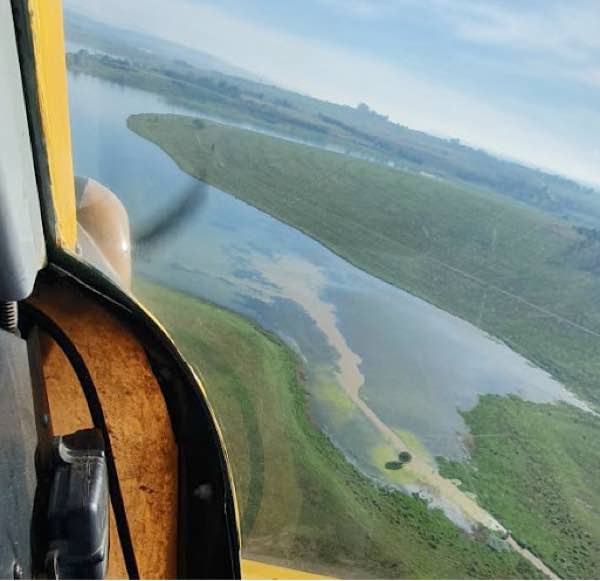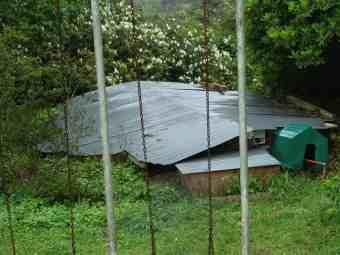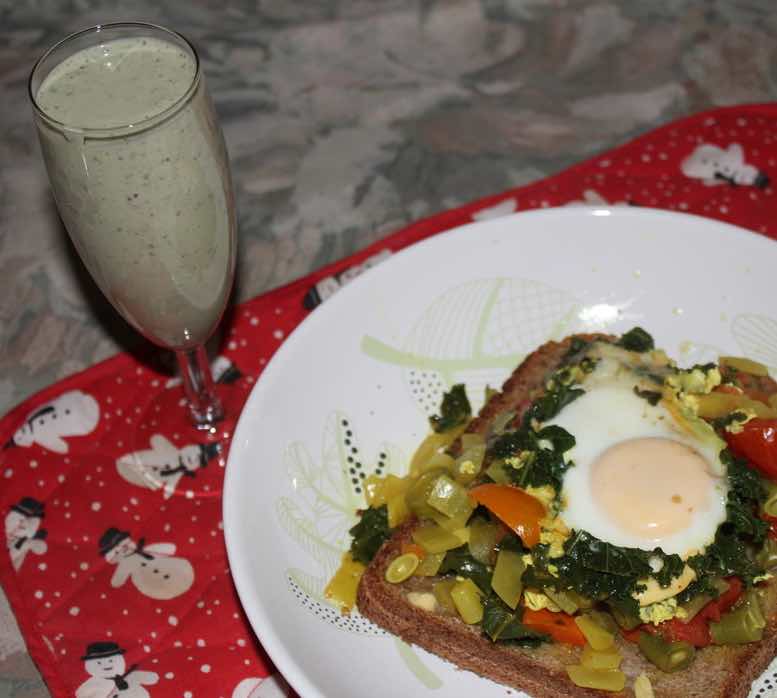| Back to Back Issues Page |
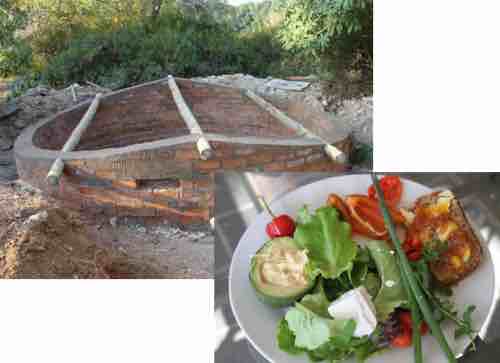 |
|
Alternative types of water storage March 10, 2021 |
DearAlternative types of water storageGreetings from Bernard Preston to this fifteenth email about creating a Cyan Zone at your home; caring not only for your own family, as they do in Blue Zones, but also for the planet, a Green Zone issue. This week we look to an issue that like ostriches, heads in the ground, we'd prefer to avoid; it's that of water storage worldwide. According to the UN there are about 60,000 large dams in the world, most built between 1930 and 1970, with life expectancies of between 50 and 100 years. That means they are now all 50 years and older; they are rapidly passing their sell by date, and dam failure is becoming increasingly likely.
The Mosul dam in Iraq is considered the world's most dangerous dam. It was built on an unsuitable foundation requiring constant injection of concrete into the foundations; maintenance that is not being done because of the war. If it failed suddenly it would drown half a million people. Likewise Kariba dam, built more than sixty years ago, is in dire straights. Water from the flood gates has carved a 100 metre deep hole in front of the wall; eroding backwards it has reached to just thirty metres from the foundations. Kariba Dam is the world's largest reservoir. When it fills and overflows again, after flooding upstream in the Zambezi river plain, failure of the wall would become increasingly likely. Three million people live directly in the path of the floodwaters and would likely be drowned. This alternating flooding and severe drop of water levels during droughts also challenges the design limits placing stress on the wall that was perhaps not sufficiently considered by engineers.
The financesWith the drop in the price of alternative sources of electrical energy from wind and solar, new large dam construction is no longer financially viable. Formerly it was paid for from the returns from hydroelectric power. It's cheaper now to put up PV panels.Climate change has had a devastating effect on large dam finances too. Currently Kariba dam is only 20% full but a year ago in January, 2020 it was less than eight percent of capacity. It should supply a half of Zambia's electrical power but obviously authorities simply are unable to release the required amount of water; most of the time it just isn't available owing to the continuing drought.
Researchers weighing the costs of 240 large dams concluded that hydroelectric power is simply unable to reliably give a positive return on new investment for governments. FloodingClimate change requires the building of even larger storage dams to reduce flooding but the finances simply are not there; the construction of projects all over the world are being cancelled.The world is faced with not only a shortage of power, but perhaps even worse water too. We simply have to consider alternative types of water storage. Cyan Zone thinking is that we have to care better for these aging dams for both the water and the electricity they supply for our use. It also demands that we consider our personal roles in climate change that is devastating these old reservoirs, and recognise that sufficient new ones simply will not be built. Decommissioning of old dams is already happening. That's caring for the planet and our own needs; true green and blue zone issues.
Water qualityIn the photo above you can see raw sewage flowing into Midmar Dam from Mpophomeni village.Whether it's the chlorine, THMs or bacteria, there are serious questions to be asked about the quality of municipal water. RecreationFormerly many of the large dams provided outings for the family that would boost the finances of maintenance. Weekend picnics and overnight camping used to be an escape for a stressed world. So too fishing and sailing.But in today's brave new world watching Netflix and trolling the web is considered more fun. Outdoor clubs are increasingly having difficulty enticing the young to come out and enjoy nature. Recreation is no longer considered one of the primary functions of large dams. Psychiatrists and drug companies are no doubt relishing the increased business. All of this demands new ideas on alternative types of water storage. "When the world wearies, and society ceases to satisfy, there's always the great outdoors, not forgetting that the garden is where forest bathing begins."
- Bernard Preston!
It also reduces flooding when there is heavy rain. For only two months in nine years, at the height of two droughts, have we used municipal water.
Long CovidLong Covid is a very worrying syndrome, but there's good news. New research published in the British Medical Journal shows that it's very tied up with the state of the microbiome as it is called in the colon; the trillions of important bugs living in our gut. They are negatively affected by chemicals in our commercial water supply.Sometimes being called the "long haulers", symptoms of fatigue, breathlessness and pain continue long after the infection is over. The solution is not difficult. Using rainwater, and making a probiotic like kefir takes only a few minutes. I personally believe this to be one of the great breakthroughs in my own health. In just one week, kefir permanently fixed severe stomach pain at least two nights a week for fifteen years, from a stubborn heliobacter infection. 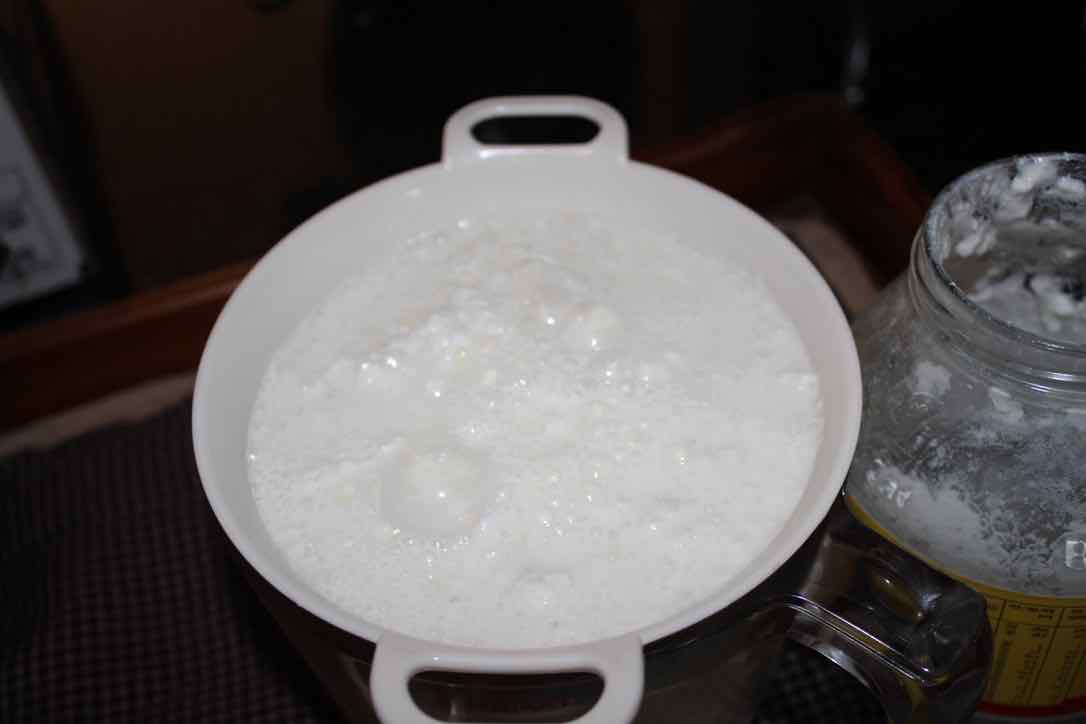
kefir-benefits.html Sauerkraut, kimchi, buttermilk and unpasteurised yoghurt are all good probiotics. But kefir is the easiest to make. It is rather sour, so we frequently use it in a smoothie with a little honey.
Eggs Hilton and a kefir smoothie make an excellent breakfast; people enjoying this kind of food will not become long haulers. kefir-breakfast-smoothie.html Eggs-Hilton.html To sum upLateral thinking in these trying times is essential. What contribution can you make to saving the planet for your offspring from the ravages of pollution, and grave shortages of electricity and clean water?What can you do to protect yourself and your family, because the Covid virus is sure to sneak in the backdoor eventually? In the face of new mutants, as with HIV, there is no guarantee that the vaccines will give us complete protection. Caring for yourself, caring for your family, protecting Mother Earth; create a mini cyan zone in your space. We have found it enormously satisfying and are absolutely certain it is the core reason that in our eighth decade we need to take absolutely no medication.
Next monthNext month we continue to look at the small things we can do to protect both ourselves and the planet from the ravages of disease and pollution.
Till next week, Doc Bernie
|
| Back to Back Issues Page |
